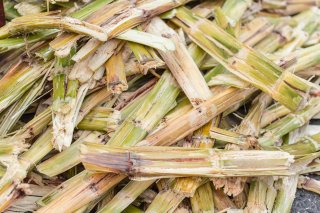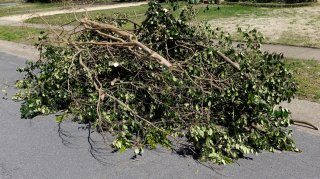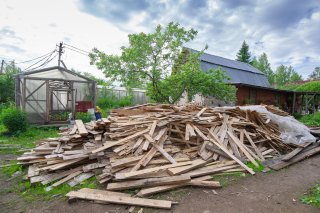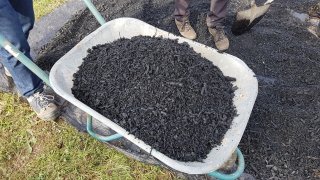Fact Sheet on Clean Cellulosic Biomass and Non-Hazardous Secondary Materials Determinations
Official PDF version (pdf)(518.1 KB).
September 2024
On this page:
- What is clean cellulosic biomass?
- Are units that combust clean cellulosic biomass as fuel regulated as solid waste incinerators under the Clean Air Act?
- What does “unless discarded” mean in the context of clean cellulosic biomass?
- How does construction and demolition debris relate to the definition of clean cellulosic biomass?
- What is the status of biomass that has been combined with municipal solid waste?
- What is the status of clean cellulosic biomass that is processed to make biochar?
- What is the status of biomass that does not meet the definition of “clean cellulosic biomass”?
What is clean cellulosic biomass?
Clean cellulosic biomass consists of residuals that are equivalent to traditional cellulosic biomass (i.e., harvested, plant-derived organic matter). Clean cellulosic biomass is considered “clean” when it contains contaminants at concentration levels no higher than those normally associated with virgin biomass material. Read Title 40, Code of Federal Regulations, Section 241.2. This fact sheet is to help generators and combustors understand how to make Non-Hazardous Secondary Materials determinations for clean cellulosic biomass.

Examples include but are not limited to:
- Agricultural and forest-derived biomass (e.g., green wood, forest thinnings, clean and unadulterated bark, sawdust, trim, tree harvesting residuals from logging and sawmill materials, hogged fuel, wood pellets, untreated wood pallets).
- Urban wood (e.g., tree trimmings, stumps, and related forest-derived biomass from urban settings).
- Corn stover and other biomass crops used specifically for the production of cellulosic biofuels (e.g., energy cane, other fast-growing grasses, byproducts of ethanol natural fermentation processes).
- Bagasse and other crop residues (e.g., peanut shells, vines, orchard trees, hulls, seeds, spent grains, cotton byproducts, corn and peanut production residues, rice milling and grain elevator operation residues).
- Wood collected from forest fire clearance activities, trees and clean wood found in disaster debris, clean biomass from land clearing operations, and clean construction and demolition wood.
Are units that combust clean cellulosic biomass as fuel regulated as solid waste incinerators under the Clean Air Act?

No, clean cellulosic biomass is considered equivalent to traditional fuels. It is not a secondary material or a solid waste when burned as a fuel, unless discarded (as described in the next question). So, units burning this material as fuel would not be regulated as solid waste incinerators under Clean Air Act Section 129, which applies only to solid waste incineration units. While not regulated under Section 129, it is possible that the units may be subject to requirements under Section 111 or 112 of the Clean Air Act. Refer to additional details on CAA applicability in 40 CFR Part 60.
What does “unless discarded” mean in the context of clean cellulosic biomass?
In general, cellulosic biomass that is managed separately from solid waste and is going to be burned for energy recovery would not be considered “discarded.” Examples of processes that would not constitute “discard” include:

Peanut shells collected at a nut processor and managed separately from any waste material before being sent to a facility that converts it to an alternative fuel. Yard trimmings, leaves, branches, and other plant material collected separately from municipal solid waste to be converted to alternative fuel.
On the other hand, cellulosic biomass that has been mixed with solid waste, such as municipal solid waste or construction and demolition debris, or that has been disposed of (e.g., buried in a landfill), would be considered “discarded.” Units combusting these co-mingled materials would be regulated as solid waste incinerators, unless the material is sufficiently processed and meets the legitimacy criteria for non-waste fuel in 40 CFR Part 241. A solid waste incineration unit may be regulated under CAA Section 129. Refer to additional details on CAA applicability in 40 CFR Part 60. For a detailed explanation on how to make a non-waste fuel determination under 40 CFR Part 241, read the Non-Hazardous Secondary Material Guide for Waste/Non-Waste Determinations (pdf)(685 KB).
How does construction and demolition debris relate to the definition of clean cellulosic biomass?

While clean construction and demolition wood is an example of clean cellulosic biomass, construction and demolition debris, which consists of a mixture of material resulting from construction and demolition activities, is not.
C&D debris must be processed to produce construction and demolition wood that would meet the definition of clean cellulosic biomass. Read the specific standards for processing in 40 CFR Section 241.4(a)(5), which include a requirement that the combustor obtain a written certification from each final processor of C&D wood that states: the processed C&D wood has been sorted by trained operators in accordance with best management practices.
What is the status of biomass that has been combined with municipal solid waste?
Biomass that is combined with municipal solid waste or other types of solid waste has been discarded.
A unit combusting biomass mixed with municipal solid waste would be a municipal solid waste incineration unit regulated under CAA Section 129, unless the combined material is first adequately processed and meets the legitimacy criteria in 40 CFR Section 241.3(d) as a non-waste fuel. For a detailed explanation on how to make a non-waste fuel determination, read the NHSM Guide for Waste/Non-Waste Determinations (pdf)(685 KB).
What is the status of clean cellulosic biomass that is processed to make biochar?

Clean cellulosic biomass that is processed to make a biochar product using pyrolysis or a similar process would not be considered discarded and would not be a secondary material or solid waste for the purposes of the Clean Air Act. Biochar produced from clean cellulosic biomass is considered a “traditional product” for the purposes of the regulations found at 40 CFR Section 241.3(d)(2)(iv).
What is the status of biomass that does not meet the definition of “clean cellulosic biomass”?
Biomass that is not “clean cellulosic biomass,” such as treated wood, is a solid waste when combusted as fuel, unless it has been sufficiently processed and meets the legitimacy criteria for non-waste fuel in 40 CFR Section 241.3(d)(1) or meets one of the categorical non-waste fuels listings in 40 CFR Section 241.4. For example, resinated wood is a categorical non-waste fuel per 40 CFR Section 241.4(a)(2).
In addition, biomass that is not clean cellulosic biomass is considered discarded when used in a combustion unit to make biochar (and thus potentially subject to CAA 129), unless it meets the legitimacy criteria for a non-waste ingredient at 40 CFR Section 241.3(d)(2). These criteria include the requirement that the biochar product contains contaminants at levels that are comparable in concentration to, or lower than, those found in a traditional biochar product (i.e., biochar produced from clean cellulosic biomass).
